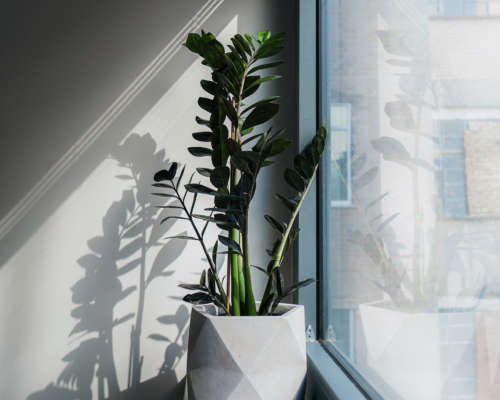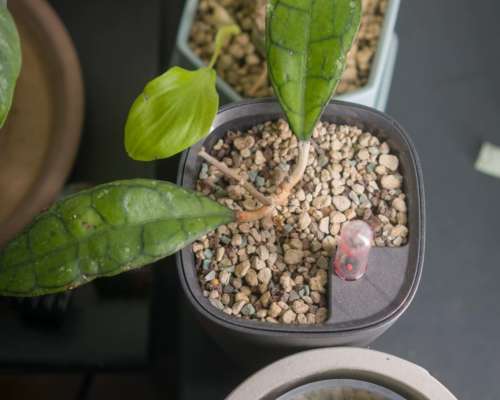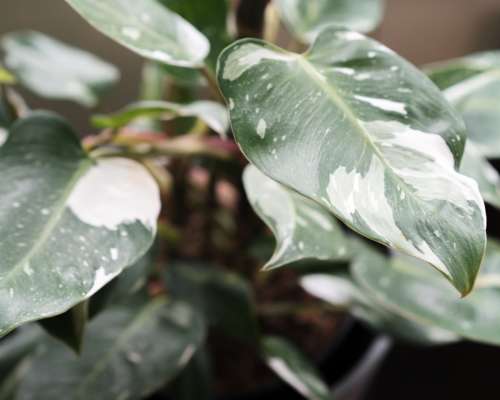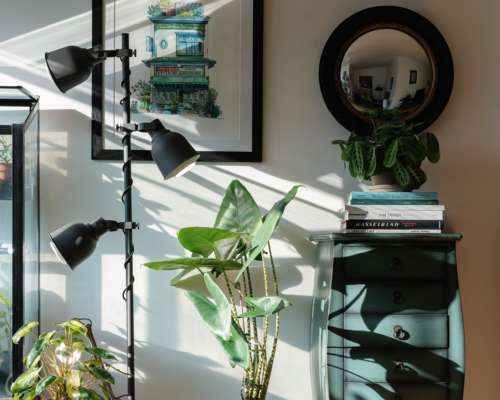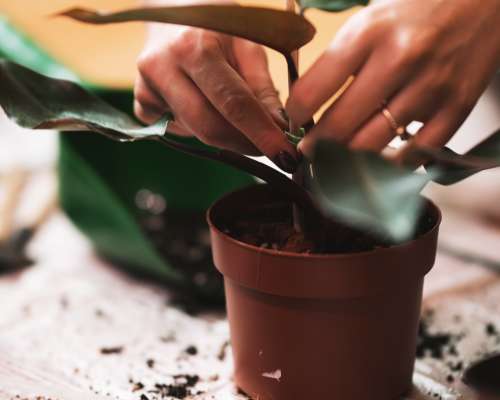Root rot it’s a common occurrence in plants unfortunately and I’m sure we’ve all experienced it at least once.
Rot is always caused by soil being too wet and not being able to drain causing the roots to suffocate basically. I mean who likes wet feet, right?
Here’s few things to keep in mind to provide your plants with a healthy environment:
- Always pot plants in pots with drainage. If your planters don’t have drainage then drill some holes at the bottom. If that’s not an option for you then pot your plants into plastic nursery pots (that have drainage holes) and place them in decorative planters.
- Use an airy soil mix that allows water to drain
- Don’t overwater your plants
If you’re doing well on the first two points lets discuss ‘overwatering’. The most common season for overwatering is winter. In colder seasons when the light levels are much lower, plants don’t grow as much (or stop growing altogether). That’s because plants need good light to photosynthesise. When they are actively growing houseplants will ‘consume’ light, food and water. If they are dormant due to lower light levels then you need to adjust your watering too. So the reason winter is most likely the culprit for overwatering it’s because we forget to adjust our watering according to changes in environment.
I bet you are wondering what ‘too much water’ means and what is the ’right amount’. What I mean when I say ‘overwatered’ is that you are watering your plants too frequently and the soil stays wet too long, roots can’t absorb the moisture anymore and are just sitting in water (hence the ‘wet feet’ analogy). Once roots start rotting your plant will start declining pretty quickly and if left untreated it will kill the plant.
If you are just starting out in the green world I know how tempting it is to fuss over your plants every 5 minutes to check if they are ok, if they need more light or more water. If you are unsure when you should give your houseplants a drink stick your finger in the soil. If it comes out with dirt it means that the soil is still moist (so put that watering can down). If your finger is clean and dry then go ahead and tend to your plants.
If you’ve identified that your plant/s suffer from rot here’s what to do:
- Gently remove your plant from the pot and soil.
- Wash all soil from the roots with lukewarm water so you can see what’s going on.
- If you notice mushy roots you’ve unfortunately hit Bingo and you need to remove all damaged roots.
- Sterilise your shears or scissors before starting chopping those roots
- Once your tools are prepped start removing all rot (cut just above the mushy areas)
- If you still have a healthy root system left then you can repot in fresh soil mix. You can treat the remaining roots with fungicide or hydrogen peroxide solution (mix one part to 10 parts water) to avoid the spread of bacteria to the healthy plant. And remember to repot in a soil mix that drains well.
- If your plant has been badly affected and has lost most or all of its roots you can try to root it again. I recommend sphagnum moss or (for more stubborn plants that keep rotting) I use perlite.
Now that (hopefully) you’ve saved your plant please remember the 3 rules:
- Always pot plants in pots with drainage
- Use an airy soil mix that allows water to drain
- Don’t overwater your plants
Here is my go to soil mix that I use for all aroids, begonia, etc.:
- 50% regular soil (I use BIOBIZZ Light Mix)
- 15% perlite (BIOBIZZ comes with added perlite but I add some extra Gro-Sure Perlite)
- 35% coco husk (I use Komodo Coconut Terrain)
- Horticultural charcoal to help with bad bacterias/fungus in the soil

